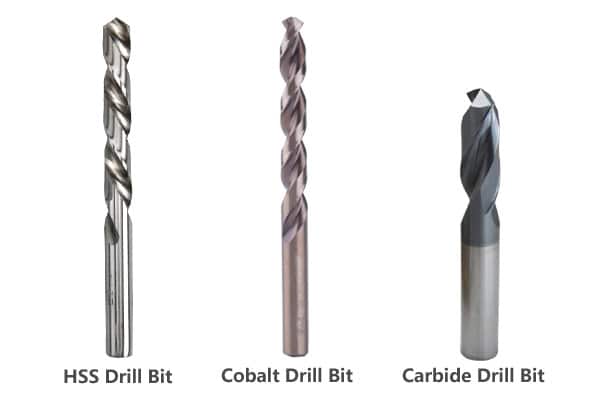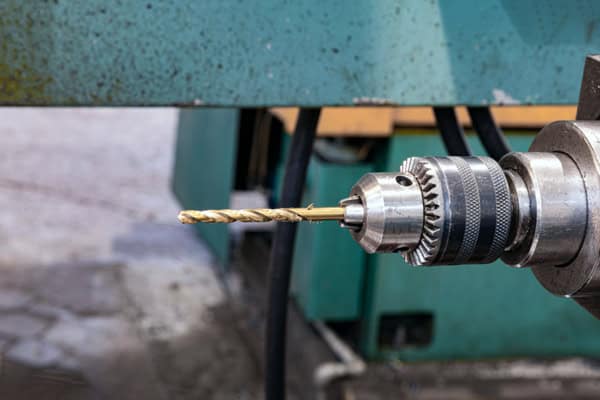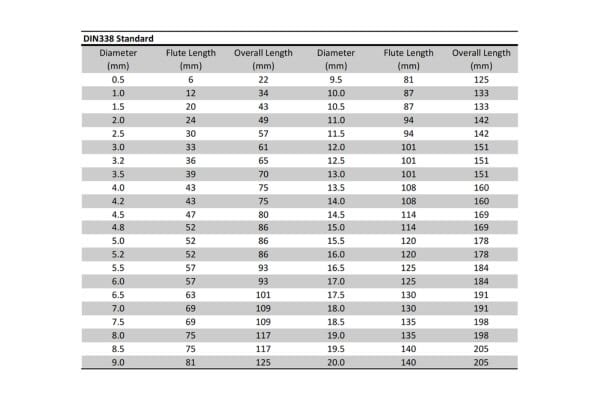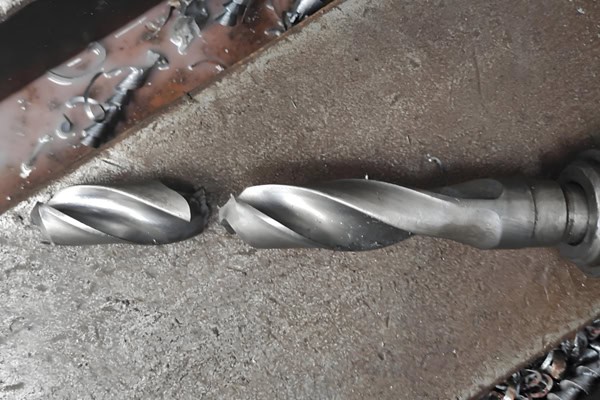Are you tired of drill bits that break easily or don’t create clean holes? It’s a common problem I’ve faced.
Choosing the right drill bit and taking good care of it is key to getting the job done right. This guide will walk you through everything you need to know, including why carbide drill bits are often the best choice for tough materials.
Let’s dive in and get you drilling like a pro!
HSS vs Cobalt vs Carbide Drill Bits: What to Choose?
Ever wondered which drill bit material is best for your project? I know I used to!
HSS bits are good for softer materials, cobalt for tougher metals, and carbide for really hard stuff like stainless steel and work-hardened steel. Carbide drill bits are the strongest and stay sharp longer.

Das Richtige wählen drill bit material1 can seem tricky, but understanding the strengths of each type2 will save you time and money. Let’s explore this further.
Understanding Drill Bit Materials
Different materials offer different levels of hardness and heat resistance. Here’s a simple breakdown:
| Material | Beschreibung | Best For | Kosten |
|---|---|---|---|
| HSS | High-Speed Steel; good for general use, made with molybdenum and tungsten. | Wood, plastic, soft metals like aluminum | Low |
| Kobalt | HSS mixed with cobalt, making it harder and more heat-resistant. | Stainless steel, cast iron, tough alloys | Mittel |
| Hartmetall | Extremely hard tungsten carbide, maintains hardness at high temperatures but brittle. | Tile, masonry, hardened steel, composites, work-hardened ferrous metal | High |
I remember one time I was drilling into a stainless steel sink with an HSS bit. It barely made a dent and the bit was ruined in seconds! That’s when I learned the hard way about using the right tool for the job. Now, I always reach for my carbide or cobalt bits when working with stainless steel or other hard metals. Carbide is generally my go-to for the toughest jobs.
Key Considerations When Choosing a Drill Bit
- Material Hardness: Match the bit material to the hardness of your workpiece. For very hard materials, carbide is the best choice.
- Heat Resistance: For metalworking, especially with hardened metals, choose bits like carbide that can withstand high temperatures.
- Cost: Balance the bit’s performance with your budget. HSS bits are cheaper but may not last as long for demanding tasks. Carbide bits are an investment but can save you money in the long run.
- Specific Application: Consider any specialty needs, such as drilling clean, flat-bottomed holes in woodworking (Forstner bits) or creating various hole sizes in sheet metal (step drill bits).
What Happens if I Don’t Keep Drill Bits Clean and Oiled?
Neglecting your drill bits can lead to some serious problems. Trust me, I’ve been there!
If you don’t clean and oil your drill bits, they can rust, become dull, and even break. Regular maintenance keeps them working well and extends their life. This is especially important for carbide bits, even though they are tougher.

So, how does neglecting drill bits affect their performance and longevity? Let’s take a look.
The Impact of Neglecting Drill Bit Maintenance
| Problem | Consequence | Lösung |
|---|---|---|
| Rust and Corrosion | Weakens the bit, reduces cutting efficiency, and can cause the bit to break. | Clean and dry bits after each use. Apply a light coat of oil, especially before storing them. |
| Dullness | Makes drilling harder, requires more force, and increases the risk of damaging the workpiece or overheating the bit. | Sharpen bits regularly using a bench grinder, drill bit sharpener, or hand file. If a bit is too worn, replace it. Carbide bits can be re-sharpened by professionals. |
| Material Build-up | Reduces drilling accuracy, increases friction and heat, and can cause the bit to bind or break. | Clean bits after each use with a brush, cloth, or cleaning solution. Use a toothpick or needle to remove debris from flutes and cutting edges. |
| Chuck Wear | Vibration transfers to the drill bit tip, increasing temperature and causing catastrophic failure. | Regularly lubricate the chuck with grease and inspect it for signs of wear. Replace the chuck if you notice sideways wear or deformities on the slots. |
I used to be lazy about cleaning my drill bits, and I paid the price. One time, I was drilling a series of holes in some aluminum, and my bit kept getting stuck. I eventually realized it was covered in built-up aluminum shavings and had lost its edge. Now, I make it a point to clean my bits after every project, even my carbide ones.
Best Practices for Drill Bit Maintenance
- Regular Cleaning: Remove debris after each use with a brush or cloth. Use a degreasing agent for oil or grease.
- Sharpening: Keep your bits sharp to ensure efficient drilling and prevent damage. Carbide bits require specialized sharpening.
- Lubrication: Use cutting fluid when drilling metal to reduce friction and heat.
- Proper Storage: Store bits in a dry, organized case to prevent rust and damage.
What is a Quick Way to Determine the Right Size Drill Bit?
Choosing the right drill bit size can be confusing, especially with so many options.
A drill size chart is your best friend! It lists standard sizes in fractional, metric, wire gauge, and letter measurements. You can quickly find the right bit for your needs. Make sure you get a chart that includes sizes suitable for the materials you’re working with, especially if you’re using carbide bits for specialized applications.

Having a reliable method3 to determine the correct drill bit size4 is invaluable. Let’s explore how to make this process easier.
| Measurement System | Beschreibung | Common Usage |
|---|---|---|
| Fractional Inch | Measured in inches (e.g., 1/4", 1/2"). | General-purpose drilling, woodworking |
| Metric | Measured in millimeters (e.g., 3mm, 6mm). | Metalworking, engineering, and countries using the metric system |
| Wire Gauge Number | Numbered from 80 (smallest) to 1 (largest). | Twist drill bits, particularly for smaller sizes |
| Letter Gauge | Lettered from A (smallest) to Z (largest). | Twist drill bits, typically for sizes larger than those covered by number gauge |
I remember when I first started woodworking, I struggled to find the right drill bit sizes. I’d often end up with holes that were too big or too small. Then, I discovered drill size charts, and it was a game-changer. Now, I keep a chart handy in my workshop.
Tips for Selecting the Correct Drill Bit Size
- Use a Drill Size Chart: Keep a chart handy in your workshop for quick reference.
- Consider the Material: Softer materials may require slightly smaller bits to prevent splintering or tearing.
- Match to Fasteners: If drilling for screws or bolts, match the bit size to the fastener’s shank diameter.
- Start Small: When in doubt, start with a smaller bit and gradually increase the size until you achieve the desired hole diameter.
Why do Drill Bits Snap?
Breaking a drill bit mid-project is incredibly frustrating. But why does it happen?
Drill bits usually break because of too much pressure, using the wrong speed, or using a dull or poor-quality bit. Even carbide bits can snap under these conditions, though they are more resistant. Understanding the causes can help you prevent it.

Let’s explore some of the common reasons for drill bit breakage5 and how to avoid them.
Common Causes of Drill Bit Breakage
| Cause | Beschreibung | Prevention |
|---|---|---|
| Excessive Pressure | Forcing the bit through the material puts too much stress on it, causing it to snap. | Let the bit do the work. Apply steady, moderate pressure and avoid pushing too hard. Even carbide bits will fail if you force them. |
| Improper Speed | Using too high a speed can overheat the bit, while too low a speed can cause it to bind and twist. | Use the correct speed for the material and bit size. Start slow and increase gradually as needed. |
| Dull or Worn Bits | Dull bits require more force to drill, increasing the risk of breakage and overheating. | Keep bits sharp by sharpening them regularly. Replace bits when they show signs of wear and tear. Carbide bits can be professionally sharpened. |
| Wrong Bit Type | Using a bit that is not designed for the material can cause it to struggle and break. | Always use the appropriate bit type for the material you are drilling. |
| Poor Quality Bits | Cheap bits are more likely to break, get stuck, and have other issues. | Invest in quality bits made from durable materials. |
| Chuck Wear | The drill bit is not operating in optimal performance conditions when the integrity of the chuck is compromised due to wear. | Regularly lubricate the chuck with grease and inspect it for signs of wear. Replace the chuck if you notice sideways wear or deformities on the slots. |
| Lack of Lubrication (Metal) | Excessive friction and heat buildup. | Use cutting fluid or lubricant to reduce friction and heat buildup. This is critical when drilling metal, even with carbide bits. |
I once snapped a whole set of cheap drill bits while trying to drill through some hardened steel. I was using too much pressure and the wrong speed, and the bits were simply not up to the task. That experience taught me the importance of using high-quality bits and proper drilling techniques. Even now, I’m careful when using my carbide bits!
Tips to Prevent Drill Bit Breakage
- Use Quality Bits: Invest in good quality drill bits made from durable materials. Carbide is often the best choice for demanding applications.
- Apply Proper Pressure: Let the drill bit do the work. Avoid excessive pressure that can cause overheating and damage.
- Lubricate When Drilling Metal: Use cutting oil to reduce friction and heat buildup.
- Match Speed to Material: Use the correct speed for the size of the bit and material you are drilling.
- Keep Bits Sharp: Sharpen or replace bits regularly to avoid using dull or worn bits.
- Regular Lubrication: Always ensure the chuck is internally lubricated with grease. A lack of grease on the SDS drill upon removal from the chuck is an indicator of insufficient lubrication.
Fazit
Choosing the right drill bit, especially considering carbide for tough jobs, maintaining it properly, and using it correctly will save you time, money, and frustration.
Happy drilling!
-
Understanding drill bit materials can enhance your projects and save costs. Explore this link for detailed insights. ↩
-
Learn about the strengths of various drill bits to make informed choices for your projects. This resource is invaluable. ↩
-
Discover proven techniques for selecting drill bit sizes that can save you time and improve your work quality. Check out this informative guide. ↩
-
Understanding how to accurately choose drill bit sizes can enhance your projects and ensure precision. Explore this resource for expert tips. ↩
-
Understanding the causes of drill bit breakage can help you prevent costly mistakes and improve your drilling efficiency. ↩